Altios - Flutter Alternative
/ 4 min read
Updated:Table of Contents
Altios: Reimagining the Design-to-Code Workflow
A conceptual UX exploration
The Vision
Altios represents my vision for a paradigm shift in how we create digital products. Not just another design tool or development environment, but a conceptual platform that fundamentally rethinks the relationship between visual design and code implementation.
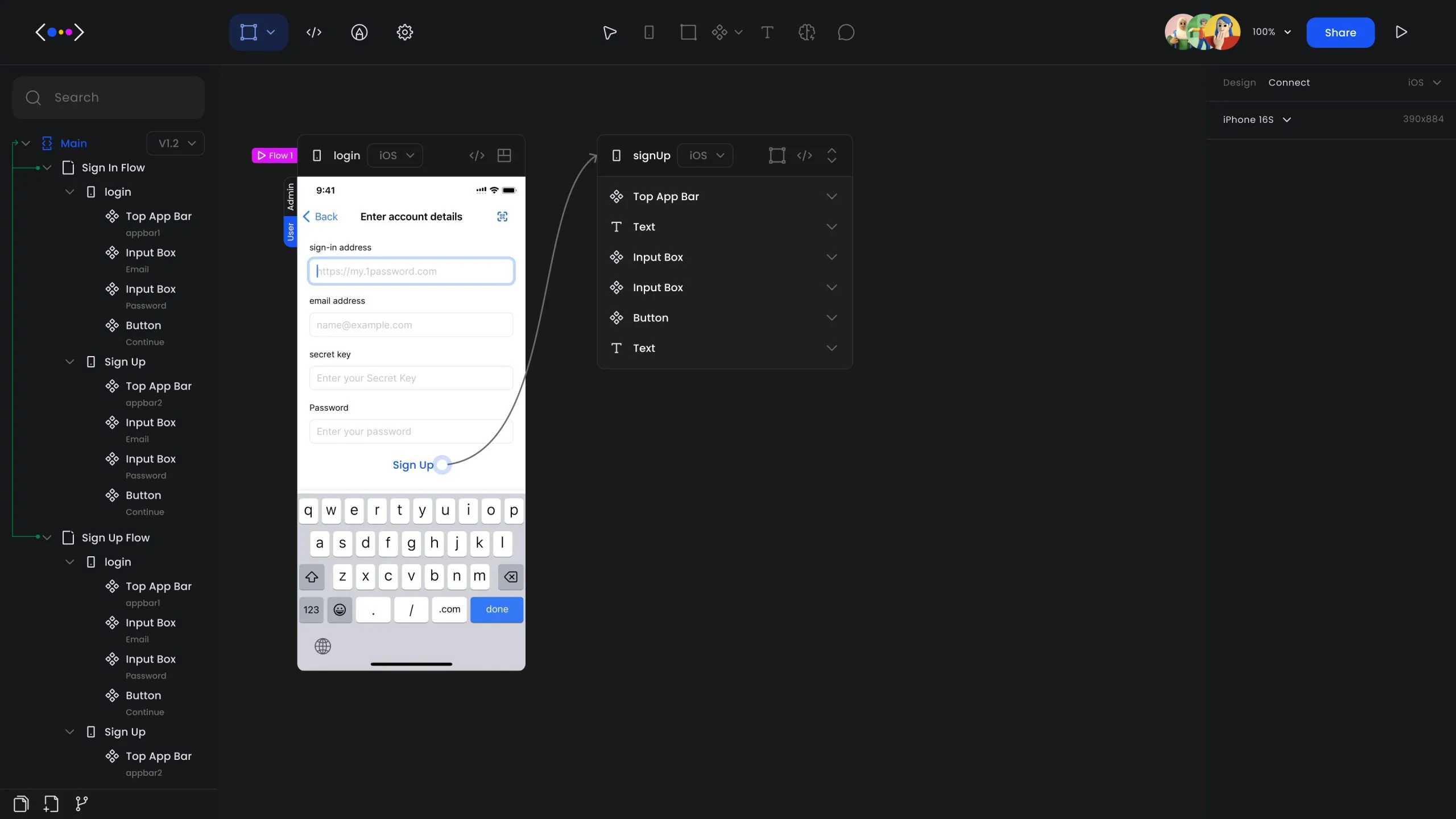
Why Altios?
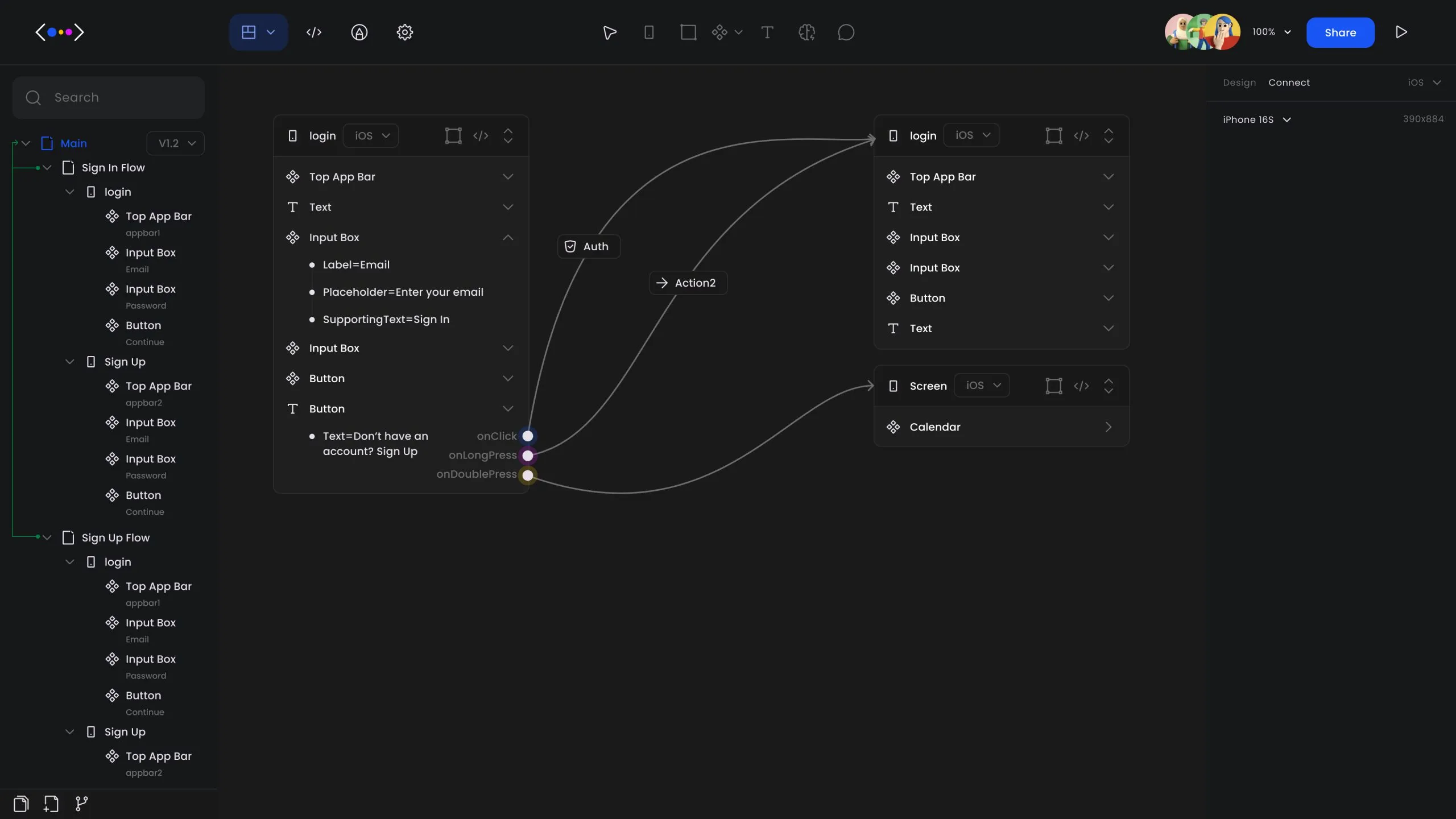
The traditional product creation workflow often feels like a game of telephone. Designers craft meticulous interfaces that developers must then interpret and rebuild from scratch. This conceptual disconnect isn’t just inefficient—it’s a creative barrier that fragments the product vision.
Altios emerged from a simple question: What if we stopped treating design and development as separate languages that need translation, and instead created a unified medium of expression?
Exploring the Concept
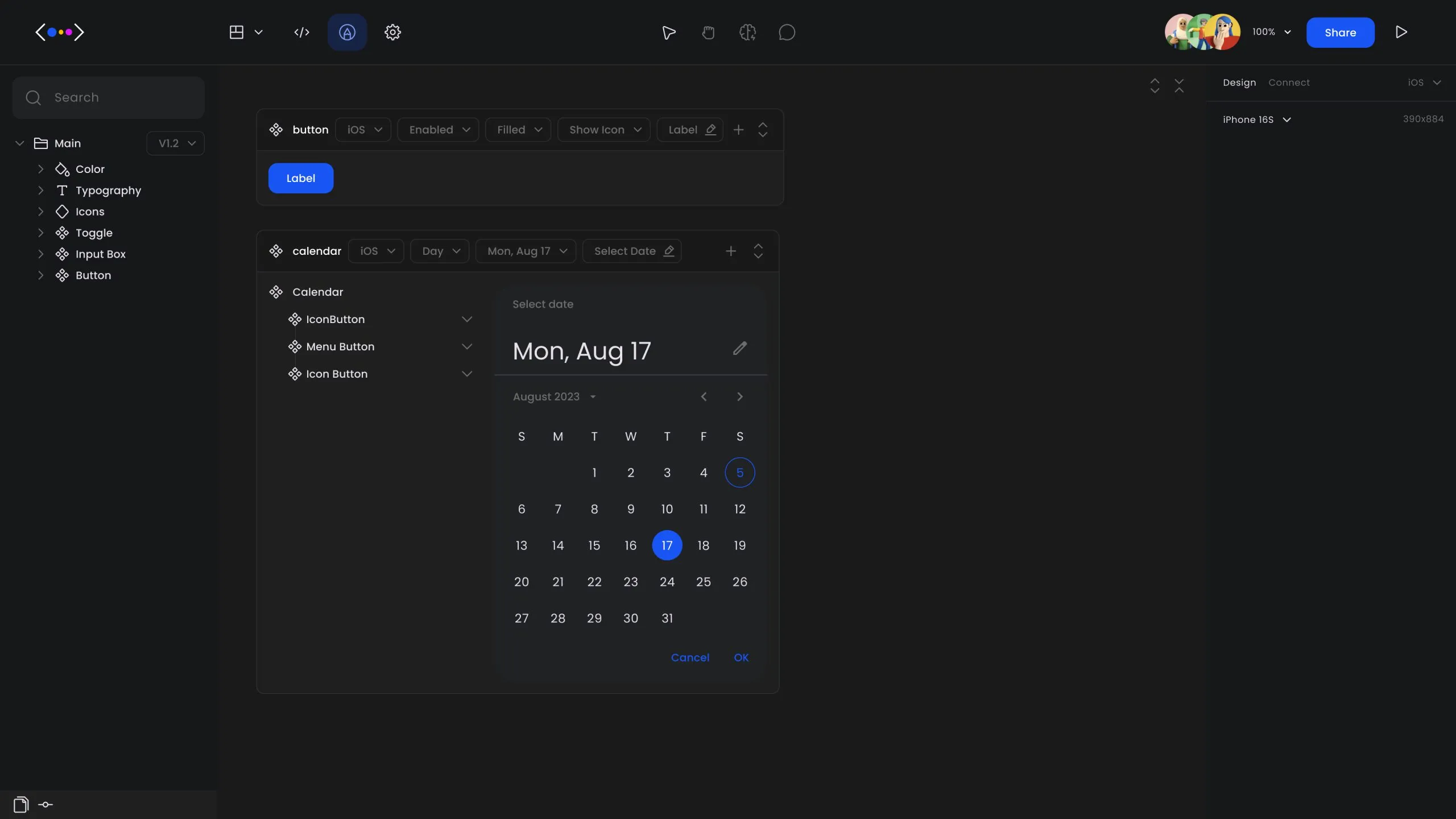
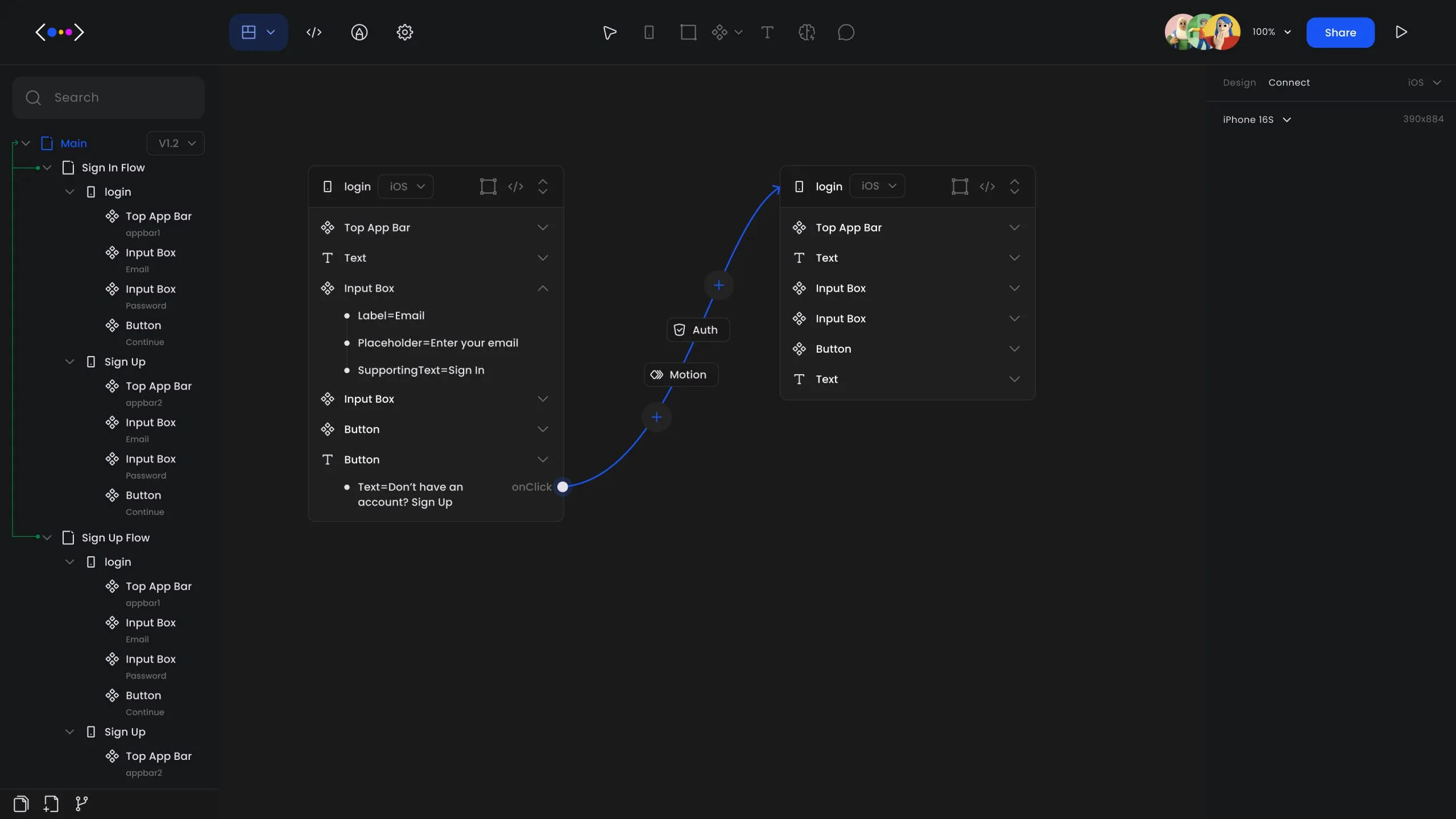
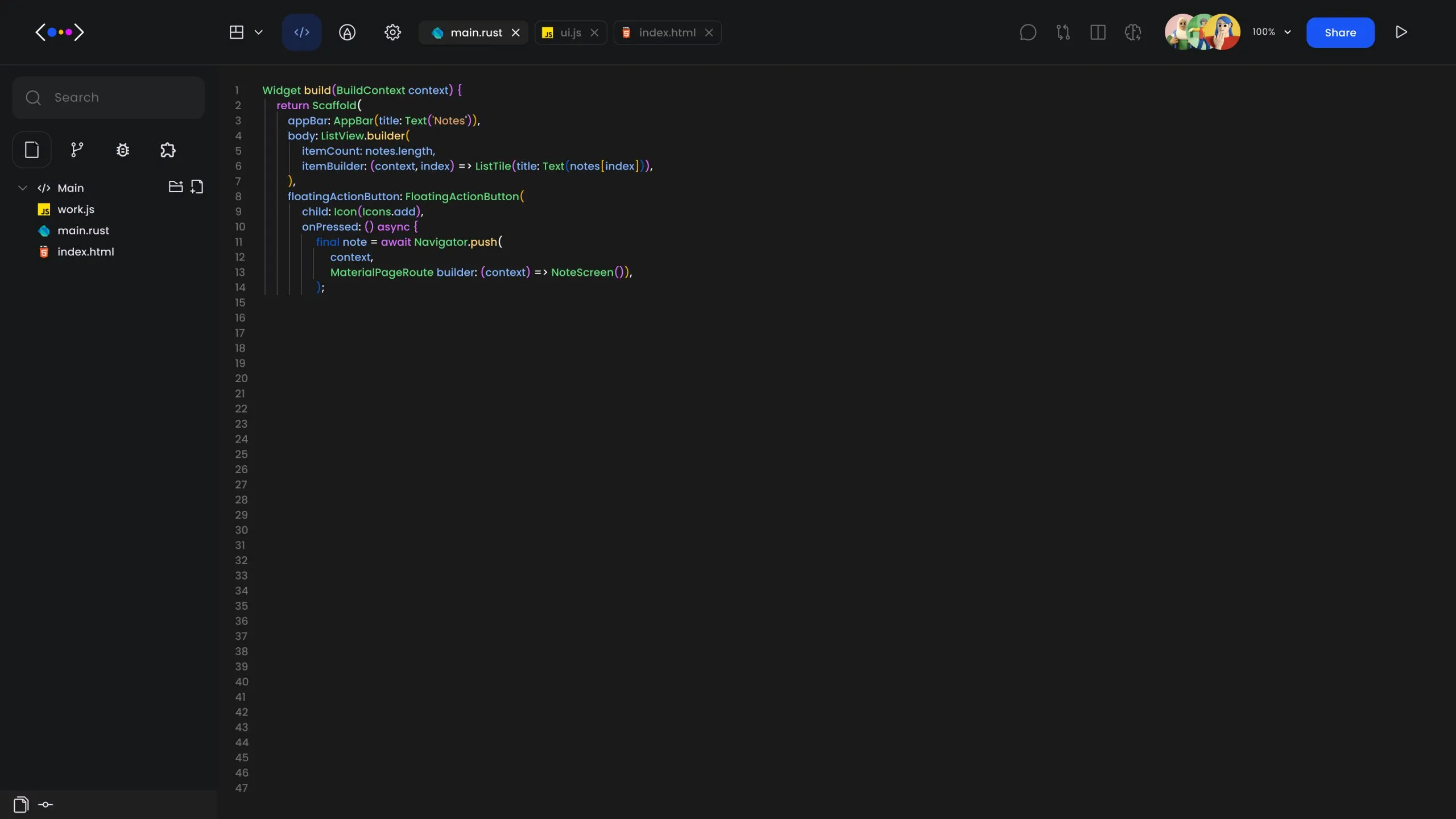
The Altios concept draws inspiration from both Figma’s intuitive design experience and FlutterFlow’s code generation capabilities, while introducing a fresh perspective on how these worlds might converge.
The Canvas & Code Duality
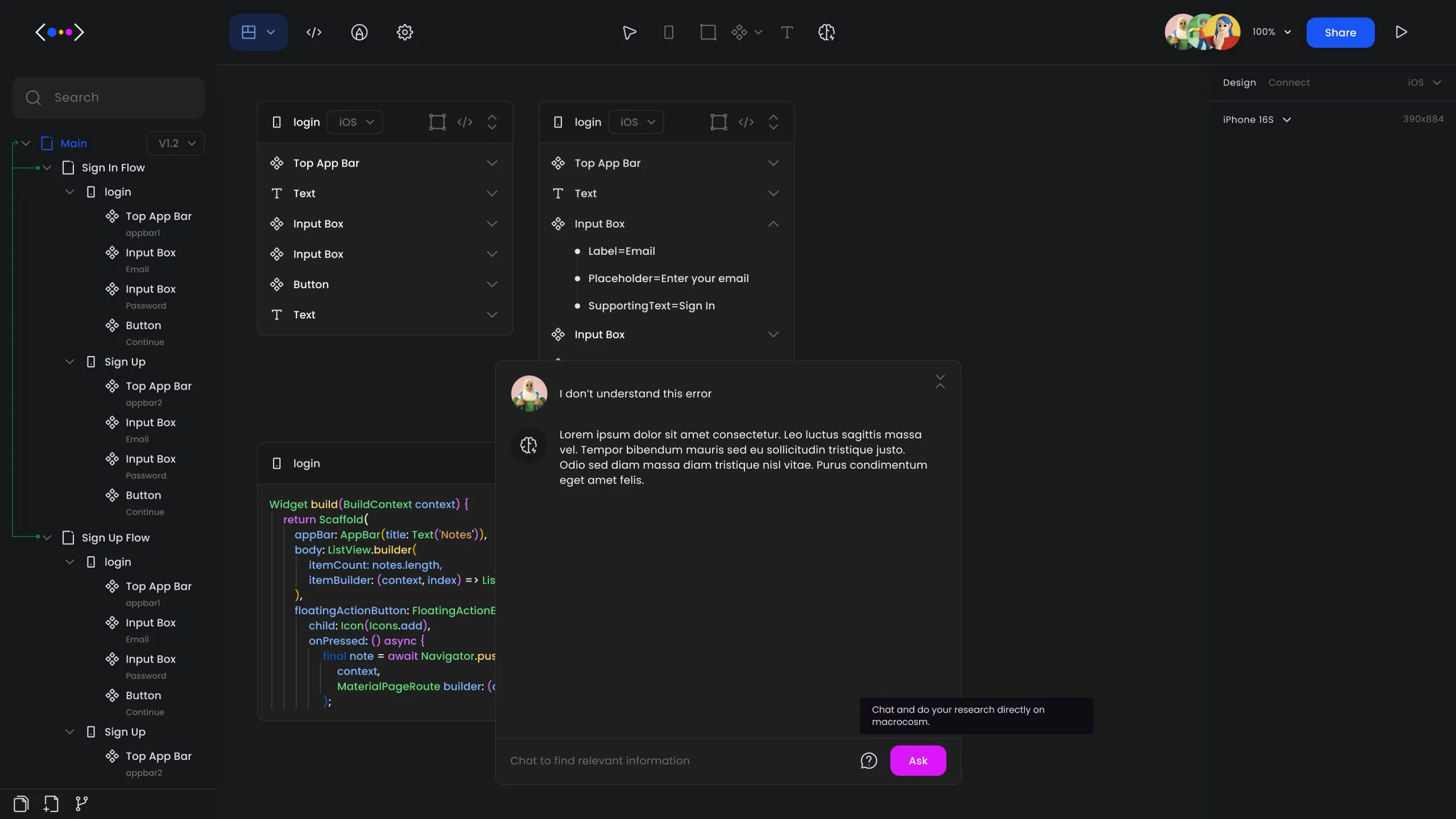
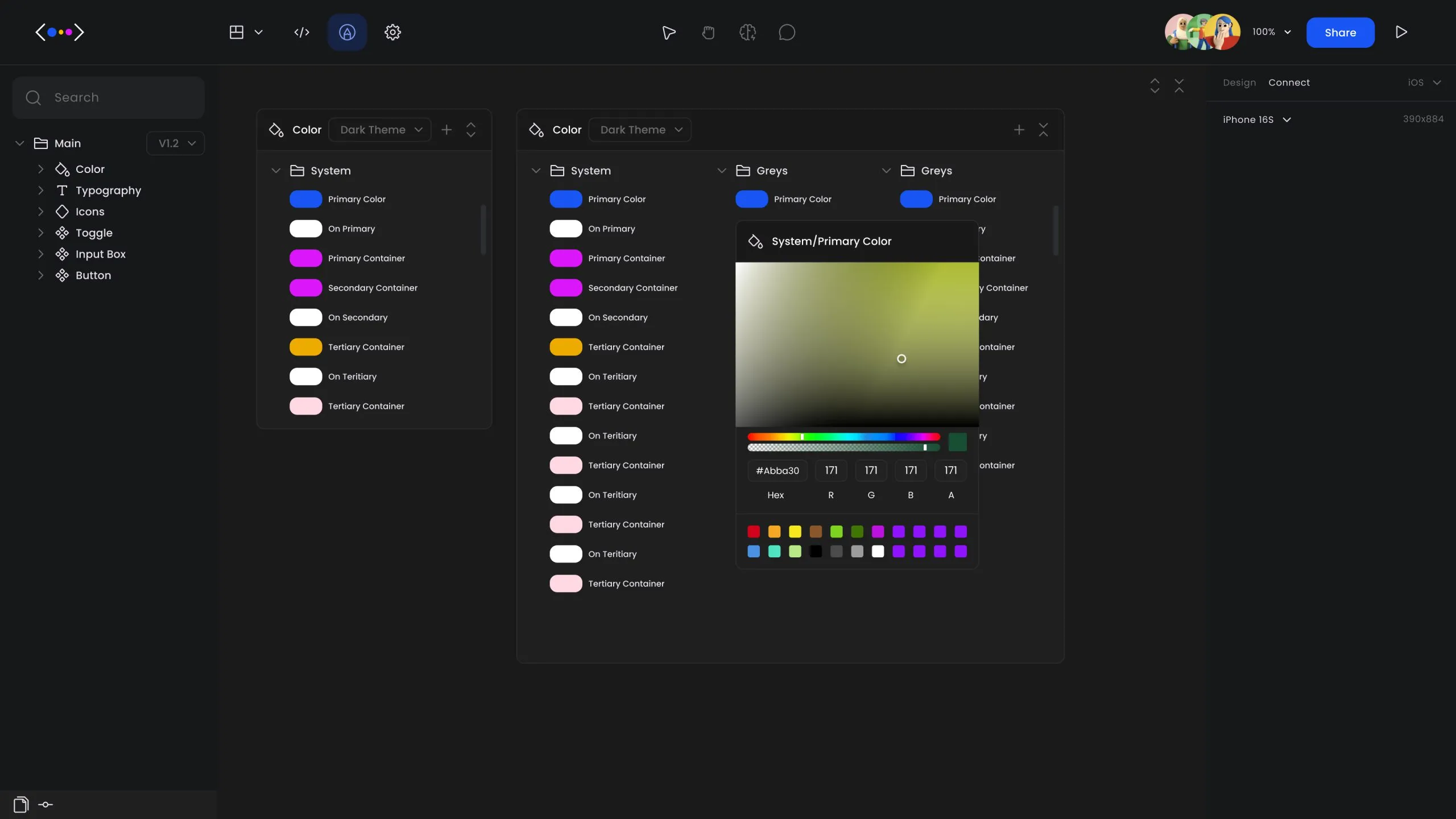
The interface allows seamless transitions between visual and code representations. As shown in the concept screenshots, the environment maintains contextual awareness—presenting relevant tools and properties based on what you’re currently focused on.
Flow-Based Navigation Architecture
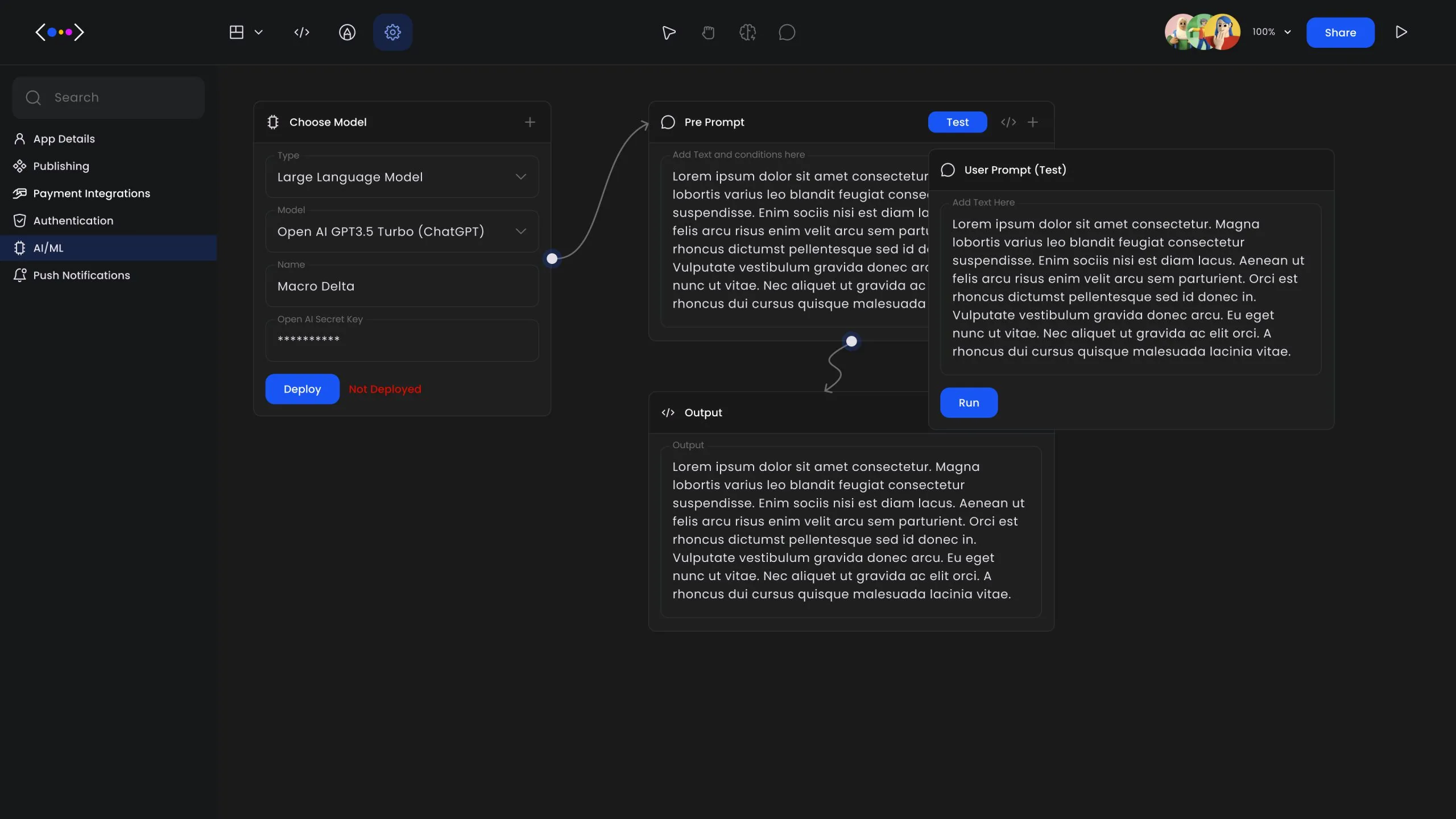
The connection visualization between screens reimagines how we might define application flow. Rather than keeping navigation logic buried in code, Altios brings it to the surface as a visual, manipulable element of the design.
Component Intelligence
The left sidebar reveals a component-based structure that blurs the line between design elements and functional code. Components aren’t just visual assets—they carry their implementation logic with them throughout the system.
AI Integration Concept
The prompt-based interface (image 8) explores how AI might serve as a collaborative partner in the creation process. This isn’t about replacing human creativity but augmenting it—allowing natural language to bridge conceptual ideas and technical implementation.
The Conceptual Interface
Dark Aesthetic with Purpose
The dark interface isn’t just a stylistic choice—it creates visual hierarchy that helps manage the complexity of having both design and code elements visible simultaneously. Color becomes functional, guiding the eye to where action is happening.
Contextual Controls
Notice how the properties panel adapts based on what’s selected. This contextual approach reduces cognitive load by showing only what’s relevant to the current focus.
Visual Feedback Systems
The connection lines and indicators throughout the interface provide immediate visual feedback about relationships between elements. This visual grammar helps users understand complex relationships without diving into code.
Beyond the Mockups
While Altios exists as a concept design rather than a developed product, its exploration of interface paradigms offers valuable insights into how we might reimagine creative tools.
Breaking Mental Models
By challenging the traditional separation between design and development environments, Altios invites us to question our assumptions about how digital products should be created.
Design System Integration
The color customization panels (image 5) suggest how a unified platform might handle design systems differently—treating them not as separate style guides but as living, executable rules that pervade both visual and functional aspects.
New Collaboration Paradigms
Though not explicitly shown in the mockups, the unified nature of Altios implies new possibilities for collaboration between different disciplines. When everyone works in the same environment, communication barriers naturally diminish.
Conceptual User Journeys
The Designer’s Perspective
Imagine a designer adjusting component properties and immediately seeing how those changes propagate through not just the visual interface but the underlying structure. This direct manipulation eliminates the anxiety of creating designs that might be technically infeasible.
The Developer’s Experience
From a developer’s viewpoint, Altios offers unprecedented context. Each code element is connected to its visual representation, making it easier to understand the intent behind technical requirements.
Creative Process Behind Altios
This concept design emerged through a series of explorations:
- Initial Sketching: Rough ideas about merging code and visual interfaces
- Information Architecture Mapping: Determining how to organize complex functionality without overwhelming users
- Visual Language Development: Creating a consistent system of visual cues and interactions
- Interface Refinement: Iterating on the visual design to balance power with usability
Reflections on the Concept
Challenging Assumptions
The most valuable aspect of the Altios concept is how it challenges fundamental assumptions about the relationship between design and code. By reimagining this relationship, it opens possibilities that wouldn’t emerge from incremental improvements to existing tools.
Balancing Complexity and Accessibility
The concept wrestles with a central tension: how to create an environment powerful enough for professional use while remaining accessible to people with varying technical backgrounds.
The Role of AI in Creative Tools
The AI integration explores a nuanced position—neither rejecting computational assistance nor surrendering creative control to it. Instead, it suggests a collaborative relationship where AI handles technical implementation details while humans focus on creative direction.
Looking Forward
While Altios remains a concept design, it represents an exploration of ideas that could influence future creative tools. By challenging the traditional boundaries between disciplines, it invites us to imagine new workflows that might better serve the increasingly complex demands of digital product creation.
This concept design isn’t just about a tool—it’s about reimagining the creative process itself for a world where design and technology are increasingly inseparable.
This case study presents Altios as a conceptual UX design exploration for portfolio purposes.